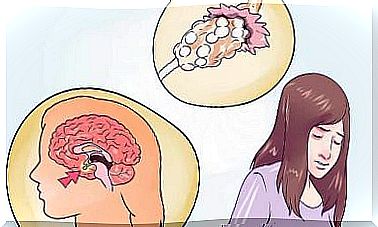How To Treat Chronic Pain?
Chronic pain is anyone that lasts more than three months. In most cases, it has a well-defined organic cause, which is why doctors make it a priority to treat the origin.
However, many pathologies will produce intense painful periods that require treatment throughout their natural history. These include cancer, rheumatoid arthritis, fibromyalgia, ankylosing spondylitis, among many others.
We have prepared an article with the most important therapeutic measures that professionals use in these cases: medications, psychological therapies, physiotherapy and complementary procedures. Do you want to know more about it? Keep reading to know more!
Drug treatments
Drugs are the first-line tool for treating chronic pain. Doctors usually take into account underlying diseases, pain intensity, economic conditions, and risk / benefit ratio before prescribing pain relievers.
They are usually combined to enhance the effect, and in most cases adjunctive therapies such as physiotherapy are used. Here is a brief review of the main drugs that can be used.
Non-steroidal anti-inflammatory drugs
Also called NSAIDs, these are among the most used worldwide. They include ibuprofen, acetylsalicylic acid (aspirin), piroxicam, ketoprofen, among others. They stand out for having anti-inflammatory, analgesic and antipyretic activity.
From a biochemical point of view, these drugs share a mechanism of action, by inhibiting various intermediates of the cyclooxygenase pathway. This is a very important metabolic pathway that produces inflammatory substances, many of them involved in chronic pain.
There are several pathways of cyclooxygenase, and depending on which of them is inhibited, NSAIDs will have a certain profile of adverse reactions. The most striking are those that affect the gastrointestinal tract (such as peptic ulcers or digestive bleeding), in addition to the kidney.

Paracetamol
Although it has certain functional similarities with NSAIDs, paracetamol or acetaminophen does not have anti-inflammatory activity. Still, it has been widely used for chronic and acute pain. So much so that it is included in the list of essential drugs of the World Health Organization (WHO).
It is generally considered safe, but overdose can lead to liver toxicity. In some cases, it even causes organ failure. Therefore, if there is pre-existing liver disease, there is a high risk of toxicity, even if the doses are therapeutic. This was described in a case report published in 2019 through Internal Medicine of Mexico.
For the treatment of some pathologies such as migraine, it is common to find commercial formulations that combine it with other drugs. Following this example, caffeine is often associated with tablets to enhance the pain-relieving effect.
Selective COX-2 inhibitors
This group includes rofecoxib, celecoxib, etoricoxib, among others. They differ from the rest of the NSAIDs because they only inhibit the aforementioned metabolic pathway (COX-2). This can be beneficial for the treatment of some pathologies, mainly because they have a good gastrointestinal safety profile.
However, these drugs have been embroiled in some controversy within the medical community. For example, valdecoxib has been withdrawn from the market because some research revealed that its prolonged use increases the risk of thrombosis.
This means that the incidence of cardiovascular events can be increased with the chronic use of these drugs. Therefore, in patients with known risk factors, doctors may restrict its consumption despite its analgesic potency.
Antidepressants
For several years, antidepressants have been shown to be effective for chronic pain, even when patients do not have a depressive syndrome. It is believed to be due to changes in the concentration of certain neurotransmitters, although there is still no definitive explanation.
The most used belong to the group of tricyclic antidepressants. Some of them are amitriptyline, nortriptyline, and desipramine. Occasionally, your doctor may prescribe newer drugs such as selective serotonin and norepinephrine reuptake inhibitors (SSRIs), such as venlafaxine and duloxetine.
They are generally used as adjuvants and have no short-term effect. Therefore, they require several weeks of continuous treatment to show clinical improvement.
Anticonvulsants
They are also used as a complement for pain management, especially those that have a lacerating or burning nature. They are known to act on the complex sensitization process of neurons, a mechanism associated with chronic pathologies.
Like antidepressants, they take several weeks to work and are not effective for acute pain. In fact, their effectiveness is slightly lower, according to research by the Cochrane group (2005).
In it, it was concluded that these drugs were effective for neuropathic pain (where the anatomy of the nerves is damaged), especially in some complications of diabetes mellitus and postherpetic neuralgia. Some would serve as an alternative treatment for trigeminal neuralgia.
Opioids
According to the WHO analgesic scale, opioids can be used for both moderate and severe pain. These drugs are characterized by their great potency, as they include substances as varied as morphine, oxycodone, methadone, fentanyl, and many more.
Unlike many of those mentioned above, they cannot be purchased without a prescription. This is due to the high number of adverse effects, although they generally occur with continuous consumption and at high doses.
Complications derived from its use include some arrhythmias, orthostatic hypotension, seizures, and kidney failure. The development of addiction is frequent, although in terminal patients this is not usually a decisive factor in deciding to eliminate opioid use.
Psychological therapy
Suffering from pain tends to improve with psychological therapy in certain patients. This is more important in those with constant feelings of fear or panic at the imminent arrival of pain, especially in chronic conditions difficult to manage.
To understand it better, we must start from the fact that health is a reflection of the accepted biopsychosocial model, in which affective and emotional aspects can influence the course of the disease. In the following, we will describe the most important psychological-based modalities for the treatment of chronic pain.
Cognitive behavioral therapy
Through assertive communication, therapists are able to help patients identify negative thought patterns that could be influencing pain perception. This includes exaggerated fight or flight attitudes to small painful stimuli, in the absence of an organic cause that justifies it.
Patients often acquire tools to replace these attitudes with positive statements regarding the problem. This does not mean that the goal is to avoid or underestimate a disease, but rather to change the misperception.
As mentioned in this review article from 2009, several observational and experimental investigations have found significant results in favor of cognitive-behavioral therapy.

Operant techniques
This section refers to the practical application of psychological therapy by the patient. It consists of the acquisition of new habits that help reduce the sensation of pain through acceptance and the ability to reestablish daily activities when possible.
The application of emotional writing and mindfulness is very popular . The first is to constantly write about emotions related to pain and traumatic events. I do not seek to achieve aesthetic perfection, but to serve as a means of personal relief.
The second, for its part, is based on optimizing attention to daily activities, with a marked effect on mental health. In fact, it is known that it could decrease depressive symptoms and improve work performance.
Relaxation
It is a broad term, and it can be reached by various techniques. Meditation is a classic example, and it can be done in a very different way than it is often shown on TV shows or movies.
The objective is to induce a state of tranquility of such magnitude that it reduces the activity of the sympathetic nervous system. This, through the secretion of substances such as adrenaline, enables the body to activate for fight or flight situations.
The decrease in muscle tension is also a desired effect, especially in patients suffering from recurrent tension headaches and migraines.
Hypnosis
It can be thought of as a technique that incorporates elements of both meditation and relaxation. During hypnosis sessions, the patient fixes his attention on an object or thought with the aim of leaving the sensation of pain subconsciously.
Psychologists and psychiatrists are the professionals indicated for this type of intervention, although the interest in its performance also includes other specialties in the health area.
This has been possible thanks to the growing scientific evidence about its effectiveness, which is perhaps its most controversial aspect. According to the prestigious Mayo Clinic, it is a valid therapy for the control of chronic pain in patients with fibromyalgia, joint and dental problems, among others.
Biofeedback
It is the only technique on this list that relies on the active support of technology during therapy sessions. It is based on the principle that the knowledge of some physiological parameters would allow the self-regulation of the processes related to the appearance of pain.
Devices that record body temperature, heart rate, and electrical activity of muscle fibers can be used. It is thought that in the long term it could induce regulation in the levels of endogenous opioids, substances related to neuropathic pain.
It is considered a complementary option for cases of migraine and defects in the temporomandibular joint, although it lacks sufficient evidence in other pathologies.
Physiotherapy
It is quite accepted and there are even professionals who dedicate themselves exclusively to it. It includes the performance of physical exercises of mild to moderate intensity to promote the progressive reduction of pain.
In general, it is indicated for musculoskeletal disorders, in which it is also sought to maintain the functionality of the limbs. One of the diseases in which it is most used is fibromyalgia.
It is characterized by increased sensitivity to pain throughout the body, highlighting some specific points of maximum intensity known in English as tender points . Its cause is not well known but it can significantly decrease the quality of life if treatment is not received.

Complementary treatments
Most health professionals usually prescribe various therapies for chronic pain. Therefore, the ones we mentioned before tend to combine and change over time to achieve better results.
When they are no longer effective and treatment failure occurs, other more invasive options can be considered to remove the anatomical substrate of pain. Such is the case with neurolysis, surgical blocks, and minimally invasive surgery.
In most cases, there are few major complications. In part, this is due to specialized training in comprehensive pain management. Today’s hospitals tend to have very heterogeneous units, which include the participation of anesthesiologists, surgeons and physiotherapists.
Chronic pain can be relieved
As a general rule, it is considered that there is no justification for patients to be in pain. The only exceptions are those in which the risk of a certain intervention outweighs the possible benefits of the same. Because of this, access to effective analgesic treatment is one of the primary goals of public health.
The options are very varied, and in case of doubt it is advisable to go to a specialist in the area. The most indicated medical professional is the anesthesiologist, although there are others trained in specific areas of pain.









